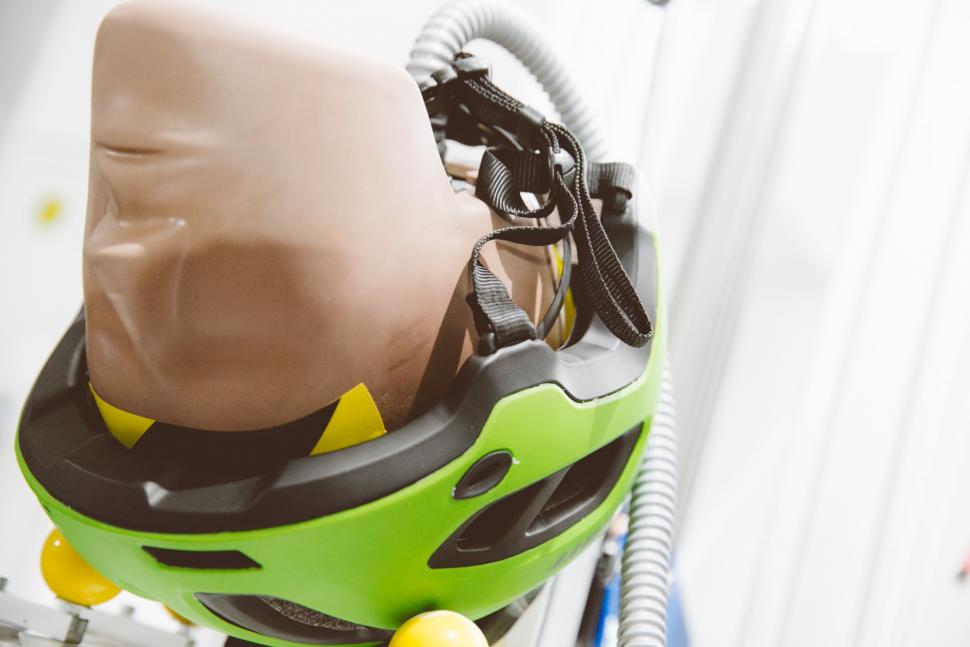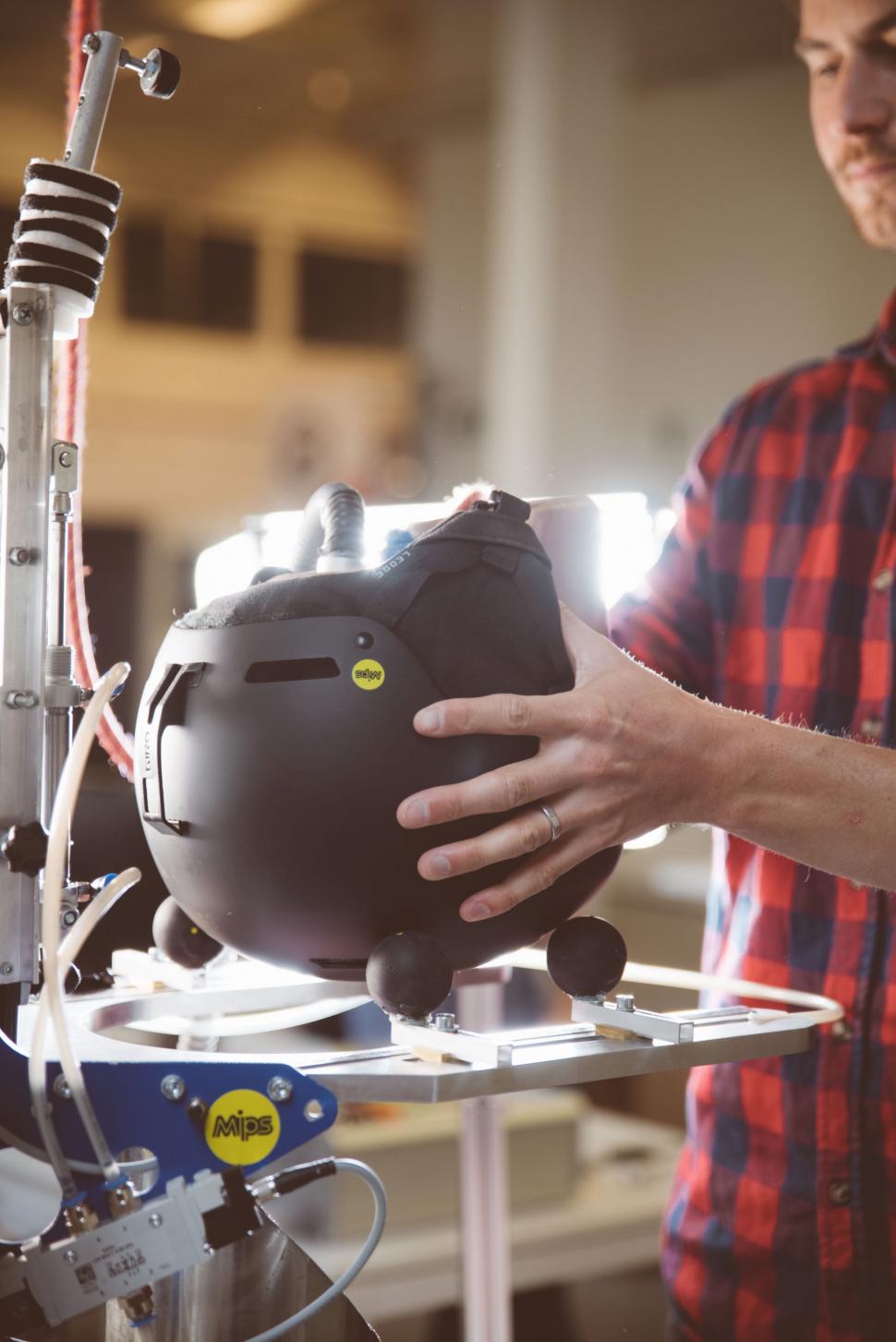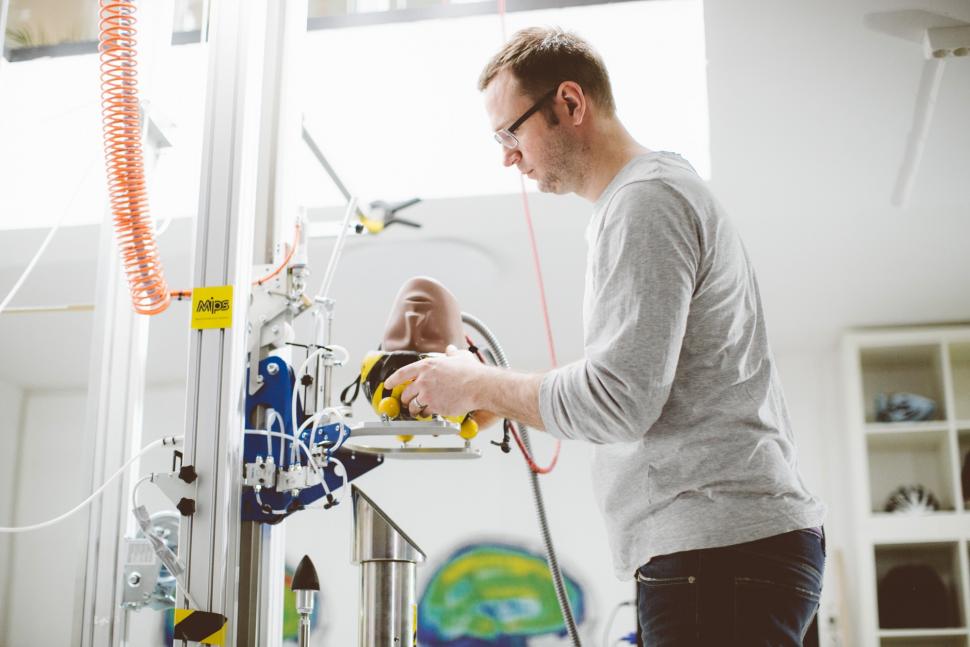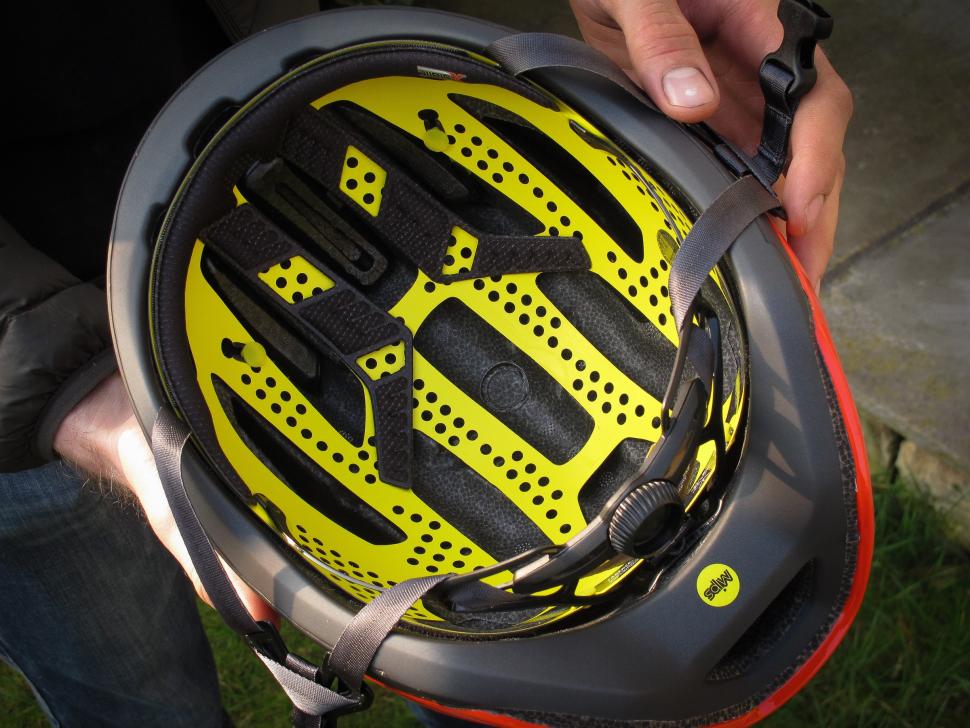- News
- Reviews
- Bikes
- Accessories
- Accessories - misc
- Computer mounts
- Bags
- Bar ends
- Bike bags & cases
- Bottle cages
- Bottles
- Cameras
- Car racks
- Child seats
- Computers
- Glasses
- GPS units
- Helmets
- Lights - front
- Lights - rear
- Lights - sets
- Locks
- Mirrors
- Mudguards
- Racks
- Pumps & CO2 inflators
- Puncture kits
- Reflectives
- Smart watches
- Stands and racks
- Trailers
- Clothing
- Components
- Bar tape & grips
- Bottom brackets
- Brake & gear cables
- Brake & STI levers
- Brake pads & spares
- Brakes
- Cassettes & freewheels
- Chains
- Chainsets & chainrings
- Derailleurs - front
- Derailleurs - rear
- Forks
- Gear levers & shifters
- Groupsets
- Handlebars & extensions
- Headsets
- Hubs
- Inner tubes
- Pedals
- Quick releases & skewers
- Saddles
- Seatposts
- Stems
- Wheels
- Tyres
- Health, fitness and nutrition
- Tools and workshop
- Miscellaneous
- Tubeless valves
- Buyers Guides
- Features
- Forum
- Recommends
- Podcast
TECH NEWS
 MIPS visit - 3.jpg
MIPS visit - 3.jpgMIPS questions lack of standards for testing rotational motion in helmets
Helmet ingredient brand MIPS (Multi-directional Impact Protection System) says it is concerned by the lack of an industry-wide standard for the testing of rotational motion in the event of angled impacts to the head, and claims some systems designed to address this issue don't work to a sufficient degree.
The Swedish company designs low friction layers that are intended to allow 10-15mm of relative motion between the helmet and the head in all directions in order to reduce rotational motion transferred to the brain in certain impacts. It says it is worried that rival systems aren't as effective at protecting against damaging strains to the brain.
Find out all you need to know about MIPS 
In a crash, the forces to the head can be divided into radial and tangential forces. Most helmet testing for consumers is focused on radial forces – essentially, the ability to protect the head from skull fracture.
MIPS focuses on tangential forces which result in rotational movement, leading to diffuse axonal injury, subdural hematoma, and concussion.
“We at MIPS have conducted more than 22,000 tests and we know that not all helmets are equally safe, not even the ones that claim to address rotational motion,” says Johan Thiel, CEO of MIPS.
“Right now, almost anyone can claim that their helmet is reducing rotational motion because there is no standard they have to meet. This is serious and concerning for users who think they are buying a helmet with added protection.
“We welcome a vigorous scientific debate on all aspects of rotational motion solutions, because it needs to be a standard in place to protect the user.”
MIPS says that it is conducting extensive research on other brands' systems designed to address rotational motion and reduce strain on the brain in certain impacts, but that so far the findings indicate that, according to how MIPS and other leading test institutes in the world test for rotational motion, they do not reduce this damaging motion to a sufficient degree.
MIPS does not name these brands so we can't be certain which helmets it has in mind. POC's SPIN system features a silicone gel-like membrane inside helmet pads, the idea being to handle shearing forces – so similar to MIPS' aims. MIPS and POC last year settled a legal dispute over intellectual property, MIPS having said that POC had violated its patents, and POC having made a counterclaim. The two companies said that they had agreed to work together to develop safer helmets.
Find out about POC's SPIN system
Kali Protectives places soft gel pads throughout the interior of helmets.
"These specially designed viscoelastic gel pads are softer than EPS (expanded polystyrene) and can compress and shear in all directions," says Kali Protectives. "As a result, they reduce rotational impact forces by 25% and low-g linear impact forces by 30%."
We know of another major manufacturer that will soon launch helmet technology designed to redirect rotational energy away from your head, so it could be that MIPS is referring to this too (details are currently embargoed). MIPS also designs systems for motorcycling, snow sports, equestrian and military applications, so it's perfectly possible that it's talking about helmets from these other spheres.
Of course, it's in MIPS' commercial interest to expound the benefits of its own system, but the company points to evidence from third parties like Virginia Tech to back up its claims.
"MIPS is concerned at the level of testing and messaging employed by distinguished helmet brands," says MIPS. "The concern is less about the accuracy of the claims being made and more that there is not an industry-wide standard from third party testing organisations.
"MIPS is convinced that, with more rigorous testing, consumers can be more accurately informed about helmet safety and better understand what makes one helmet safer than others."
Mat has been in cycling media since 1996, on titles including BikeRadar, Total Bike, Total Mountain Bike, What Mountain Bike and Mountain Biking UK, and he has been editor of 220 Triathlon and Cycling Plus. Mat has been road.cc technical editor for over a decade, testing bikes, fettling the latest kit, and trying out the most up-to-the-minute clothing. He has won his category in Ironman UK 70.3 and finished on the podium in both marathons he has run. Mat is a Cambridge graduate who did a post-grad in magazine journalism, and he is a winner of the Cycling Media Award for Specialist Online Writer. Now over 50, he's riding road and gravel bikes most days for fun and fitness rather than training for competitions.
Latest Comments
- Username 2 sec ago
Could Siobhán paint it red and noone would notice it?
- Simon E 16 min 8 sec ago
Feel so sorry for the family, likely to be in temporary accommodation for at least 6 months.
- E6toSE3 10 hours 34 min ago
I've posted before about being 69, lifelong cyclist as my main transport, much of it in, through, under, over London and how it's bicycles that...
- check12 13 hours 16 min ago
200 people out of a close by population of how many? Just build it and stop being a wuss
- Spangly Shiny 14 hours 49 min ago
To paraphrase Field of Dreams, "Build it right and they will come: and use it!"
- Rendel Harris 17 hours 10 min ago
And a Happy Christmas to you, road.cc staff!
- Rendel Harris 17 hours 58 min ago
The odds of not being able to find a single pedestrian - just one, note, "any pedestrian" - in an area containing more than about ten of them who...
- bikeman01 19 hours 37 min ago
I love how wannabe racer reviewers talk about fork flex under braking like their tyres are made of glue. I find traction gives long before fork flex.
- hawkinspeter 20 hours 44 min ago
They don't make them like they used to
- LongitudeLatitude 21 hours 35 min ago
Thanks for using my picture of chocolate in your opening picture. The original can be found here, chocolate! | LongitudeLatitude | Flickr.
Add new comment
37 comments
As far as I know, the helmet tests are indeed a disembodied head, yet another reason why they don't reflect real life.
Since the helmet promoters have denied many times that rotation is a significant cause of head injury, I'm surprised that some companies provide systems to protect against it, but I suppose the promoters' claims were just as valid as all their others.
I agree with the manufacturers that want legilsation/standards that equipment must meet if it is making claims or is promoted widely to do x and y.
If the product makers make no claim with respect to safety protection then it simply should not be sold as a 'safety' device. If there is a claim as to protection then it needs to be clearly marked on the product, the information publicly available and/or at POS with. If not then again, cannot be sold.
This should never, ever be unrealistic basic lab tests that have next to zero relation to real world use.
Currently safety products in the cyclling industry are sold using ridiculously outmoded tests and levels of force before that product breaks.
Along with the manufacturers making no protection claims the use of language without any basis of fact to promote these products is misleading at best and frankly dangerous hearsay, speculation etc.
That we have promotion by governments, multi national organisations such as the EU ROAD safety commission, their agents, charities, schools, cycling orgs, police, judges and coroners amongst others and in some places may penalise you if not wearing, or exclude you from cycling or be forced to wear despite users (many who wear against their will) do not know or have any idea as to the protection levels in real world use is a disgrace.
This is akin to forcing people to drive a car without knowing how much protection it may give you in a crash and people outside the industry making up scenarios that don't reflect motorvehicle car crashes, making wild assumptions and ignoring many others factors that have proven use of yhe so called safety benefit having massive detrimental effects on individuals and societies as a whole. Basically manufacturers not being held to account for such and no independent testing in real life scenarios, not ridiculously limited lab tests which have virtually no resemblance to real world ... which is precisely what happens with current helmet testing including MIPS systems.
I know this is likely to prompt some lively debate, but I think better independent research and appropriate standards might give more credence to the whole helmet wearing issue. At the very least, we would have a definitive body of evidence demonstrating what a helmet can protect against and what is beyond the capability of upto an inch of EPP & EPS (slip planes, soft polymer doo-dars, and general padding notwithstanding), so people can make an INFORMED judgement of wearing a lid or not, and be able to rebuke the victim-blamers with outlandish claims.
There are epideological studies which are as good as it's possible to get, but because they show either no benefit, or an increase in risk with helmet wearing, they are ignored by the media and just about everyone else interested in selling helmets.
As far as being informed, with or without capitals and bold, most people really don't want information, they want their beliefs reinforced, to justify their original decision. A wise man changes his mind when the facts change, but helmet wearing is a belief, not susceptible to rational discussion.
If you really want to get informed, take a look at cyclehelmets.org
Haha, yeah I often forget that I'm in an ever-decreasing minority as a rational person, happy to be swayed from my preconceptions by repeatable, peer-reviewed, evidence based proof, that rare nugget known also known as quality science.
I'm aware that there is counter-intuitive evidence of helmets increasing risk to riders through factors such as percieved safety (by riders and other road users), mandation reducing the numbers of cyclists, and even ineffective wearing, but I think we can all agree that it'd be nice if there were standardised test that realistically reflect the protective limits of a helmet.
I know a thin layer of aerated plastic is going to do diddly squat in the event of being hit by 1.5t steel at 50mph, I also know that the same layer of plastic is a lot more capable of saving my head from minor wounding if I fall over at 0 speed like a dick onto exposed rocks and a pointed stick if I lose my foot on an mtb trail. I guess it would be nice to where the line is between the two
Given the incredibly variety of possible permutations of factors in any cyclist collision, it would be very difficult indeed to design a standardised test which could realistically model the effects of wearing a helmet.
But we do have long term, whole population studies which are as reliable as it's possible to be, but as I've already said, they either show no benefit or an increase in risk. You don't need a standardised test if you've got real life to draw on.
Pages